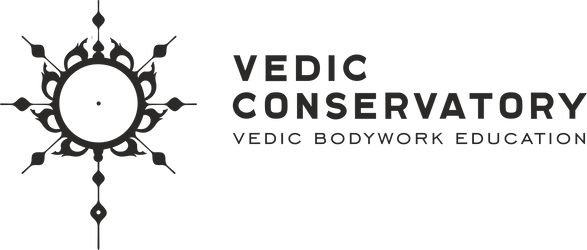
How to Use Conscious Breathing for Amazing Results in Yoga Massage
Experiment and Be Successful
Adventure and discover, and then share your successful therapeutic methods with others.
The techniques that I attempt to describe here are exhilarating and incomparable protocols for acquiring session satisfaction.
For rejuvenating and promptly refreshing our clients and ourselves, it has been my experience that all of these techniques, described herein, will dramatically improve and become even more effective when we include the yogic components of Mulabandha and Ujjayi breathing to these processes.
The challenge is being posted here. I smile!
To drink the elixir of pure style and miraculous transformations in healing, Yoga Massage, and Vedic Thai Bodywork, I relinquish my mind’s directionless meanderings and settle confidently into the trust and security of the breathing ambit.
For most bodily regions, here are some suggestions for using consciously applied breathing to release contractions and imbalances, or, inversely, to supply support to flaccid areas.
Engaging the breath for sustaining postural alignment and homeostatic vitality
The topic of Pranayama, also known as conscientious breath control, is a critically important and, curiously, a very enjoyable subject.
The experience of conscious breathing may embody instant positive potentials with very mysterious results, including tranquilizing the psycho-somatic spirit.
Conscious breathing awareness ultimately receives its celebrated acclaim with the understanding that we live only so long without food, we live only so long without water, yet we live even less without breathing. Therein we find the undisputed distinction and preeminent value of breathing as a life-enhancing priority.
Practicing pranayama is smart.
This essay describes my experience of applying focused intentional breathing regionally using BOTH inspiration [Purekha] and expiration [Rachakha] breath control to benefit all cerebral-somatic applications, including both stretch-releases and precision, rhythmic compressions.
Conscious breathing applications are used for both the purposes of releasing unwanted stress and, conversely, for the purpose of infusing supportive reinforcement to substantiate strength and transform weakness.
Despite myself during a treatment, still being so addicted to the maniacal meanderings of the mind, what the Buddhists call the tyranny of the drunken monkey, I have occasionally broken away from the pack and fully surrendered to the magic of conscious breathing during a session.
For me, the use of conscientious breathing during a treatment demonstrates intelligence.
Furthermore, the use of the sound of the breath demonstrates even more finesse and consequent expertise.
There are two fundamental breathing procedures included in this lesson with both procedures based on our therapeutic intention:
1. The first fundamental procedure is to conscientiously expire [rachakha] all our breath completely with the intention to reinforce and supply needed energy to strengthen the flaccidity and weakness, or conversely, expiring fully [rachakha] with the intention to extract and release excess contraction, tenseness, density, and restriction.
2. The second fundamental procedure is to conscientiously inspire [purekha] the breath fully, with the intention to reinforce and supply needed energy to strengthen the flaccidity and weakness, or inversely, to inspire fully to extract and release excess contraction, tenseness, density, restriction.
So, we can see here that the mental intention plays a significant role in directing the pranic results, as both the purekha [conscious inhalation] and the rachakha [conscious exhalation] may serve to reinforce and supply energy or, inversely, to extract and soften a bodily area.
To review:
Practice expiring the breath to both ‘release contraction’ or to ‘supply support.’
And/Or
Practice inspiring the breath to both ‘release contraction’ or to ‘supply support’.
I want to expound further on this valuable technique because it is the most sensitive instruction to convey.
When we demonstrate expertise issuing our conscientious breathing application, the use of either controlled inspiration or controlled expiration is an acceptable means to attain psycho-somatic balance, with both supplying or extracting energy.
Yet customarily, beginner lessons in traditional Asian Bodywork, in comparison, recommend using only one breathing technique. For example, using the exhalation to remove/extract excess energy but not to supply energy.
Beginner students are taught to apply the use of their inhalation exclusively to supply energy imbalance, but not to remove/extract energy.
So, again, we can see that with our progressive development toward expertise with our BodyArt, the inhalation and the exhalation individually can resolve both contracted density and flaccid weakness.
Furthering Expertise
To benefit further from this exquisite restorative breathing experience, we can add to the inhalation and exhalation formula a breathing cadence and duration of the breath as an aspect of the technique.
For example, setting a predetermined series of incremental counts to the breathing procedure will strongly improve the positive outcome.
Another example of varying the breathing technique for eliciting effortless and comfortable results, instead of issuing the customary exhalation during a strong and firm compression or stretch, I enjoy applying a firm and strong compression or stretch while inspirating.
In other words, while envisioning the marma, chakra, or nadi issue being flooded with supportive and revitalizing pranic intention, instead of exhaling, breathe in while exerting very firm pressure.
Another example, amongst many, would be to exert short dynamic expulsions and implosions of breath energy during our positive advance to balancing the marma, chakra, or nadi pathways.
When desiring to fill a dormant or deficient marma or when desiring to reinforce an empty or weak meridian, many skilled eastern body workers exhibit mastery of intention by inspiring deeply, deliberately, and with force while simultaneously releasing slowly, with short and rapid percussive compressions.
This highly effective technique immediately indicates qualified expertise.
As we can see from this brief lesson and these few submissions on the breathing-application techniques, there are many potential derivatives and possible cross-patterns of breathing applications and treatment protocols.
Now would you please offer me a massage?
My sincerest expression of gratitude for sharing my essays and helping me achieve my community goals!


Leave a comment